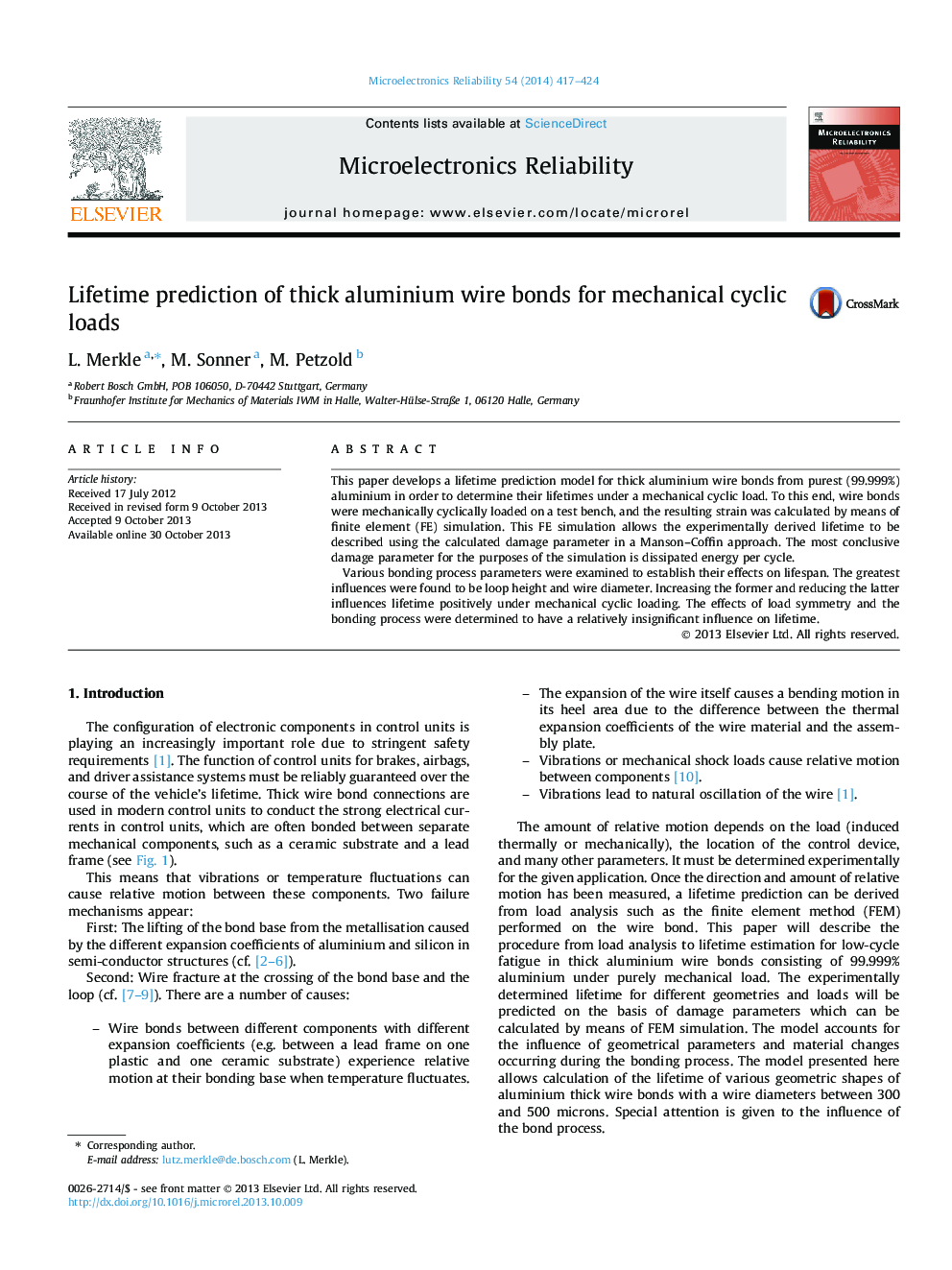| Article ID | Journal | Published Year | Pages | File Type |
|---|---|---|---|---|
| 546930 | Microelectronics Reliability | 2014 | 8 Pages |
•Developing a lifetime prediction model for aluminium wire bonds under a cyclic load.•The most conclusive damage parameter for prediction is dissipated energy per cycle.•Parameter study: the greatest influences were found to be loop height and wire diameter.•The effects of load symmetry and the bonding process have a insignificant influence on lifetime.
This paper develops a lifetime prediction model for thick aluminium wire bonds from purest (99.999%) aluminium in order to determine their lifetimes under a mechanical cyclic load. To this end, wire bonds were mechanically cyclically loaded on a test bench, and the resulting strain was calculated by means of finite element (FE) simulation. This FE simulation allows the experimentally derived lifetime to be described using the calculated damage parameter in a Manson–Coffin approach. The most conclusive damage parameter for the purposes of the simulation is dissipated energy per cycle.Various bonding process parameters were examined to establish their effects on lifespan. The greatest influences were found to be loop height and wire diameter. Increasing the former and reducing the latter influences lifetime positively under mechanical cyclic loading. The effects of load symmetry and the bonding process were determined to have a relatively insignificant influence on lifetime.
